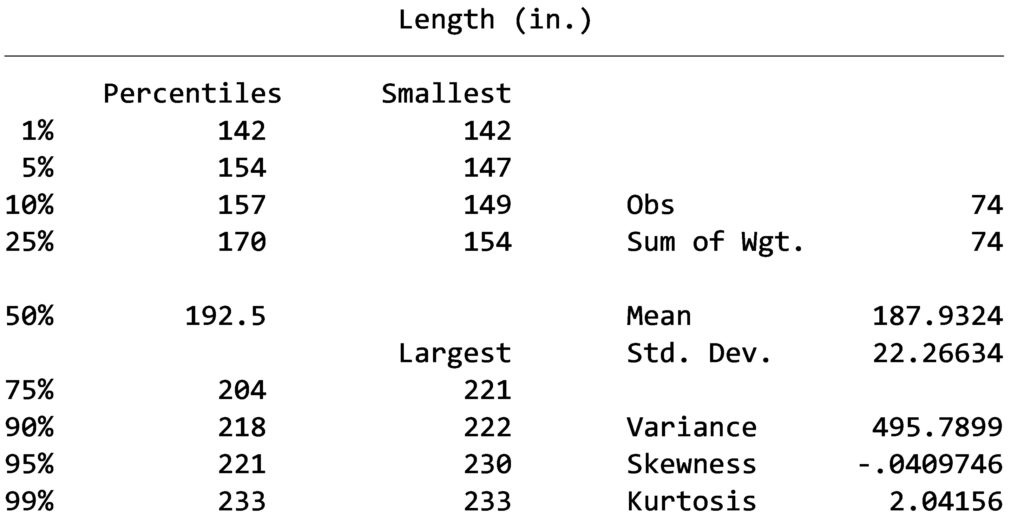


The missing option on egen total() should help take care of this condition. Regardingīesides I would like to account for missing values, so if all values of var1 for the company x are missing variable, sum1 for company x and specific interval must contain missing values and not 0. Or more simply egen _sum = total(var1), by(id eventid) Therefore bysort id eventid: egen _sum = total(var1) Based on your example, the event date and "special date" flag ( event) don't seem to matter in calculating the desired sum. It looks like you are essentially trying to create totals for unique combinations of id and eventid, not id and year. Naturally, if you didn't want to change event, you could generate event2 = event to use in place of event. Li id date event_id DesiredSum Sum, sepby(event_id) Replace event_id = event_id+event_id if i != 1īysort id event_id : egen Sum = total(var1), missing This data structure makes more sense to me */
#STATA SUMMATION CODE#
* This section of code changes event so that 1 indicates the start of the clear *īysort id : gen i = _n // to maintain sort order I'm also assuming here that event is used to flag the end of the time interval for which the event occurred (I make this assumption based on your sample data and my comment on the question). If you are not opposed to re-coding event into something a bit easier to work with, the following should suffice. | id date year var1 event Desire~m ddate EVENT Sum | Input id str10 date year var1 event DesiredSumīysort id (ddate): gen EVENT = sum(event)īy id: replace EVENT = EVENT - EVENT + 1īysort id EVENT (ddate): egen Sum = total(var1), missing
#STATA SUMMATION HOW TO#
Sorting on date within panel is just cosmetic once we have a division into spells, but still the right thing to do.įor hints from Statalist on how to provide data examples using dataex (SSC), which apply here too with minor modification, see here clear * Reversing and reversing back are both just negation using. Then reverse spell numbering, reverse time to the normal direction and apply egen as in other answers. Here that is entirely a feature, although not quite what the OP wants when applying egen, total(). The crucial small detail here is that sum() ignores missing values, or more precisely treats them as zero. Given markers 1 for the ends of each spell, we can then cumulate backwards using sum(). That said, one trick of reversing time makes subdivision into spells easy.



 0 kommentar(er)
0 kommentar(er)
